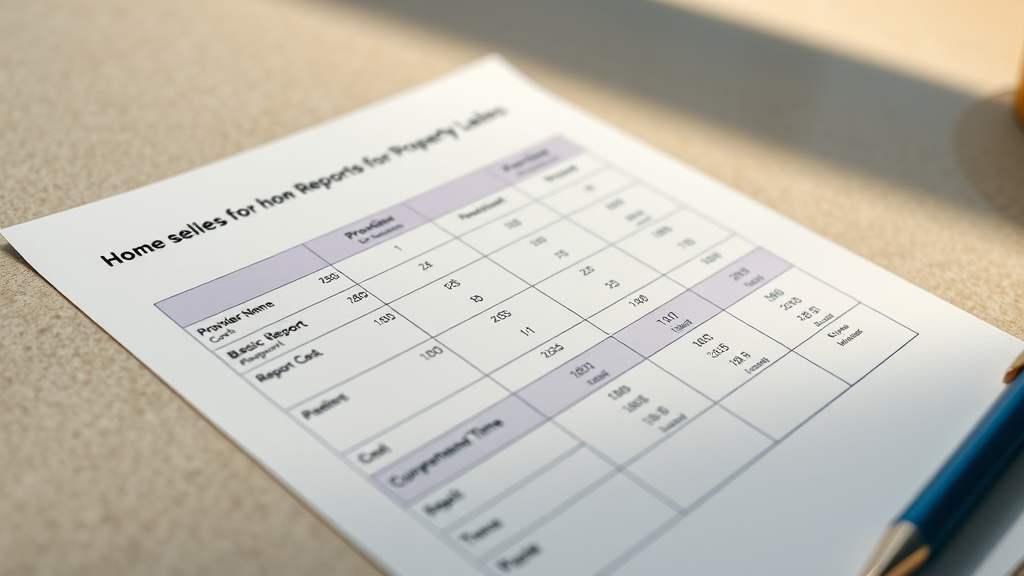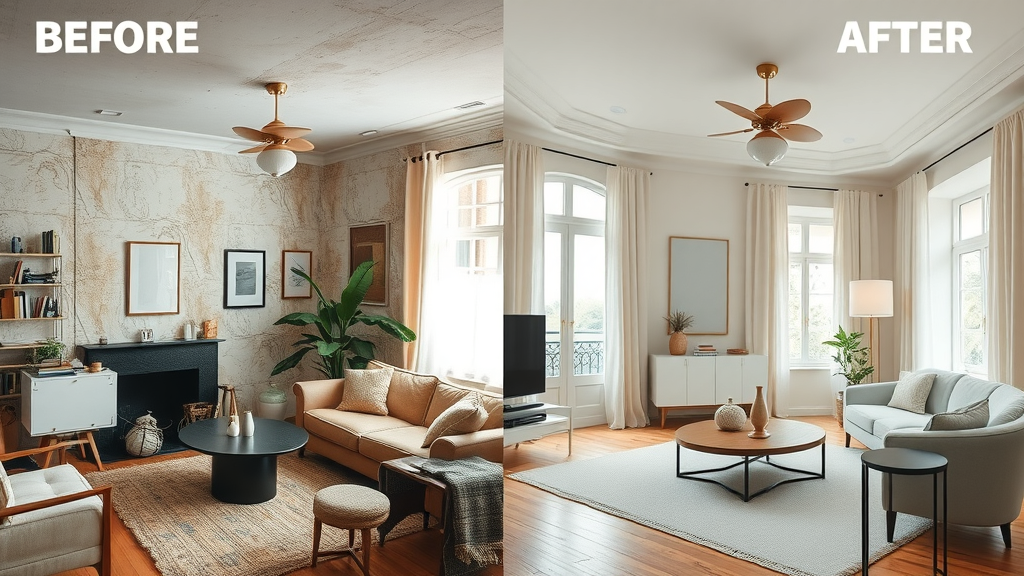In Scotland, a Home Report is a mandatory document required for selling a residential property. It provides prospective buyers with essential information about the condition and value of the property before they make an offer. The Home Report is designed to improve transparency and reduce the risk of unexpected issues after an offer is accepted.
This essential document not only sheds light on your home’s value but also highlights potential pitfalls that could cost you thousands. In “Unlock Your Property Seller’s Home Report: Avoid Costly Mistakes!” we’ll dive into why mastering this report is crucial for a successful sale. Join us as we uncover the secrets to maximizing your property’s potential and ensuring a smooth transaction!
What is a Property Seller’s Home Report?
A Property seller’s Home Report is a comprehensive document that provides potential buyers with vital information about a property. This report typically includes several key components, each designed to give buyers an accurate picture of what they are purchasing.
Components of a Home Report
Understanding the components of a home report is essential for both sellers and buyers. Below is a breakdown of the sections typically included:
Component |
Description |
|---|---|
Energy Performance Certificate (EPC) |
Provides energy efficiency ratings and recommendations for improvements. |
General Condition and Valuation |
Offers insights into the property’s condition and an estimated market value. |
Property Questionnaire |
A seller-completed form detailing the property’s history, repairs, and any outstanding issues. |
Energy Performance Certificate (EPC)
The Energy Performance Certificate (EPC) is a crucial part of the Property seller’s Home Report . It assesses the energy efficiency of your home, which can significantly impact its marketability. A higher rating can lead to lower energy costs and increased buyer interest.
General Condition and Valuation
This section evaluates the overall condition of the property, highlighting any necessary repairs or renovations that may be required. Understanding these aspects helps sellers set realistic expectations for their sale.

“A well-prepared home report can make the difference between a quick sale and a prolonged listing.” - Real Estate Expert
Legal Requirements for Home Reports
In many regions, especially in Scotland, a Property seller’s Home Report is a legal requirement prior to listing a property for sale. This ensures transparency and protects both sellers and buyers. Understanding these legal requirements is crucial for compliance.
Key Legal Aspects
Mandatory for Residential Sales : Sellers must provide a home report for residential properties marketed for sale.
Prepared by Registered Professionals : The report must be compiled by a registered valuer or chartered surveyor to ensure accuracy.
Validity Period : The home report is generally valid for up to 12 weeks, after which a new report may need to be obtained.
Why a Home Report is Crucial for Property Sellers
A Property seller’s Home Report is not merely a formality; it plays a vital role in the selling process. Understanding its importance can significantly enhance your selling strategy.
Benefits of Having a Home Report
Increases Buyer Confidence : A thorough report reassures potential buyers about the property’s condition and value.
Highlights Energy Efficiency : The EPC section can attract energy-conscious buyers.
Saves Time : By addressing issues beforehand, sellers can avoid delays in the selling process.
Impact on Selling Price
A well-prepared home report can positively impact the selling price. Properties with comprehensive reports tend to attract higher offers, as buyers are assured of their investment.

How to Obtain a Property Seller’s Home Report
Obtaining a Property seller’s Home Report is a straightforward process, but selecting the right provider is crucial.
Choosing the Right Report Provider
Registered Valuers : Ensure the provider is a registered valuer or chartered surveyor.
Experience : Look for providers with extensive experience in the local market.
Reviews and References : Check online reviews and ask for references from past clients.
Registered Valuers and Chartered Surveyors
Engaging a registered valuer or chartered surveyor ensures that your home report is accurate and complies with legal standards.

Requesting a Home Report
When requesting a home report, provide your chosen provider with detailed information about your property, including its history, any renovations, and current issues. This transparency will aid in the accuracy of the report.
Understanding Home Report Costs
The cost of a Property seller’s Home Report can vary based on several factors. Understanding these can help you budget appropriately.
Factors Affecting Home Report Costs
Property Size : Larger properties typically incur higher costs.
Location : Prices can vary depending on the local market.
Provider Fees : Different providers may have varying fee structures.
Typical Price Ranges
Type of Property |
Estimated Cost |
|---|---|
Small Apartment |
£250 - £400 |
Medium House |
£400 - £600 |
Large Detached Home |
£600 - £1,000 |

Home Report FAQs
Understanding the common questions about Property seller’s Home Reports can help demystify the process for sellers.
Common Misconceptions
Myth : A home report is only necessary for old properties.
Fact : All residential properties require a home report, regardless of age.
Myth : Home reports are optional.
Fact : Throughout Scotland, they are a legal requirement before selling.

“Knowledge is power; understanding your home’s report can empower you to make informed decisions.” - Real Estate Professional
The Role of Home Reports in the Selling Process
A Property seller’s Home Report is essential not just for compliance but for strategic selling.
Preparing Your Home for the Report
Ensuring Energy Efficiency:
Improving your home’s energy efficiency can enhance its appeal to potential buyers and may result in a higher selling price. Make necessary upgrades to improve your EPC rating.
Addressing Potential Issues:
Addressing issues in advance can prevent future negotiations or price reductions due to findings in the report. Fix any known issues that could be highlighted in the report.

Using the Report to Find a Buyer
Once the report is ready, use it as a marketing tool to attract potential buyers. Highlight the positive aspects of the report in your listings and during viewings.
Selling Strategies Informed by Home Reports
The insights gained from a Property seller’s Home Report can inform your selling strategies.
Targeting the Right Buyers
Understanding the information in your home report allows you to target buyers who value energy efficiency or specific property features.
Making an Offer Based on Report Findings
Use the findings from the home report to guide your pricing strategy and negotiations. Being transparent about your home’s condition can foster trust with potential buyers.

Conclusion: The Importance of a Home Report in Property Transactions
In conclusion, a seller’s Home Report is an indispensable tool for anyone looking to sell their property. Not only does it provide transparency and reassurance to buyers, but it also empowers sellers to make informed decisions that can lead to a successful sale.
Key Takeaways
A Property seller’s Home Report is legally required in Scotland and crucial for transparency.
Understanding its components helps sellers prepare effectively for the selling process.
The report can significantly impact the selling price and attract potential buyers.
Engaging a registered valuer or chartered surveyor ensures compliance and accuracy.
Preparing your home for the report can maximise its value and appeal.

Frequently Asked Questions (FAQs)
Is a home report mandatory for all properties?
- Yes, in many regions, a home report is required for residential properties, unless the property in new build and sold off-plan.How long is a home report valid?
- Typically, a home report is valid for 12 weeks.Can I sell my property without a home report?
- No, in Scotland, a home report is necessary to comply with legal requirements before selling.What should I do if my report highlights issues?
- Address these issues before listing your property to improve its marketability.
For more detailed information, you may want to consult resources such as MyGov Scotland .
 Add Row
Add Row  Add
Add 





Write A Comment